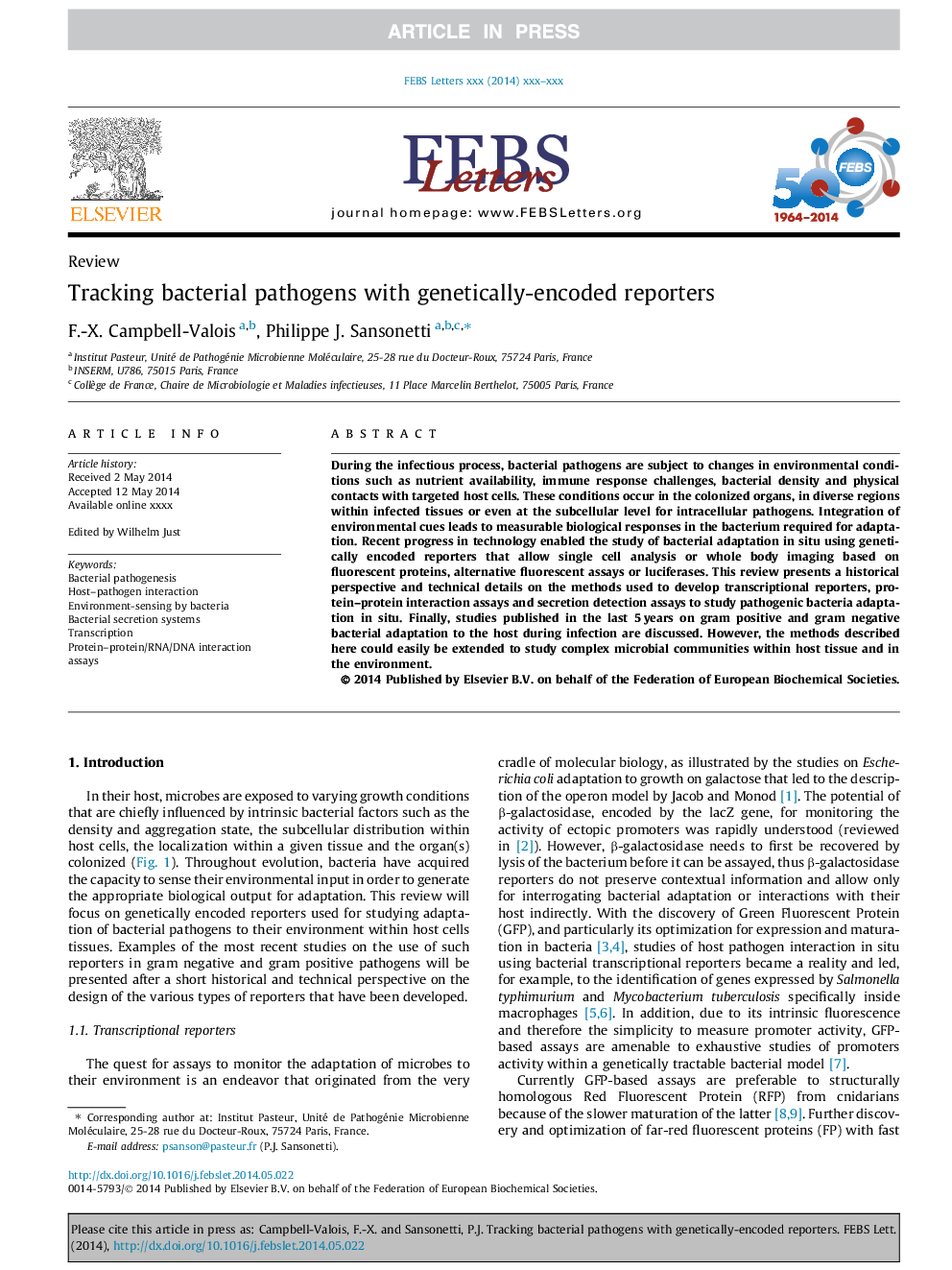| Article ID | Journal | Published Year | Pages | File Type |
|---|---|---|---|---|
| 10870363 | FEBS Letters | 2014 | 9 Pages |
Abstract
During the infectious process, bacterial pathogens are subject to changes in environmental conditions such as nutrient availability, immune response challenges, bacterial density and physical contacts with targeted host cells. These conditions occur in the colonized organs, in diverse regions within infected tissues or even at the subcellular level for intracellular pathogens. Integration of environmental cues leads to measurable biological responses in the bacterium required for adaptation. Recent progress in technology enabled the study of bacterial adaptation in situ using genetically encoded reporters that allow single cell analysis or whole body imaging based on fluorescent proteins, alternative fluorescent assays or luciferases. This review presents a historical perspective and technical details on the methods used to develop transcriptional reporters, protein-protein interaction assays and secretion detection assays to study pathogenic bacteria adaptation in situ. Finally, studies published in the last 5Â years on gram positive and gram negative bacterial adaptation to the host during infection are discussed. However, the methods described here could easily be extended to study complex microbial communities within host tissue and in the environment.
Related Topics
Life Sciences
Agricultural and Biological Sciences
Plant Science
Authors
F.-X. Campbell-Valois, Philippe J. Sansonetti,
